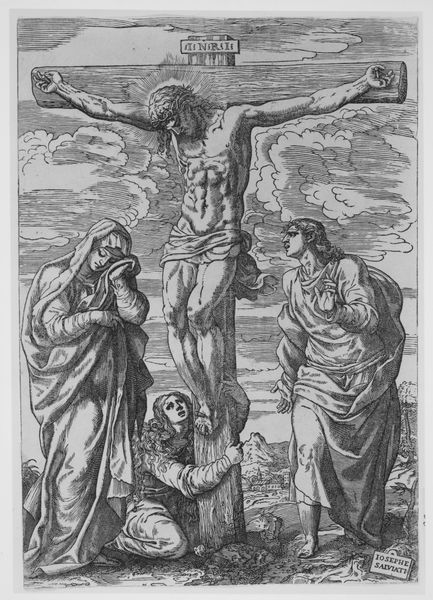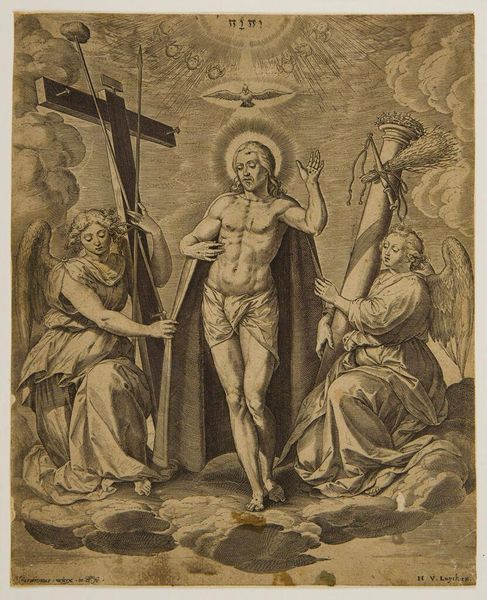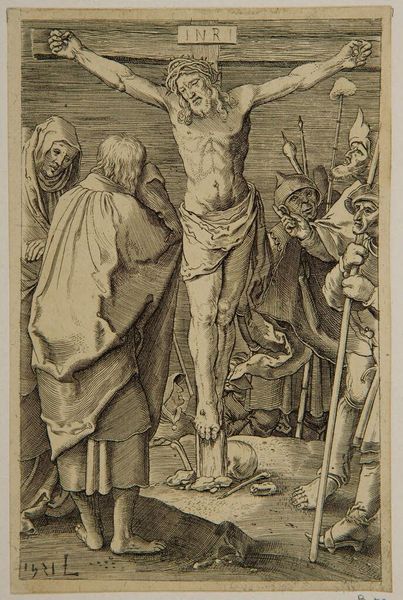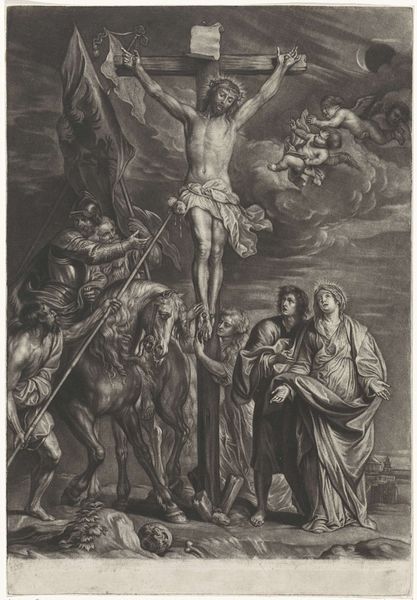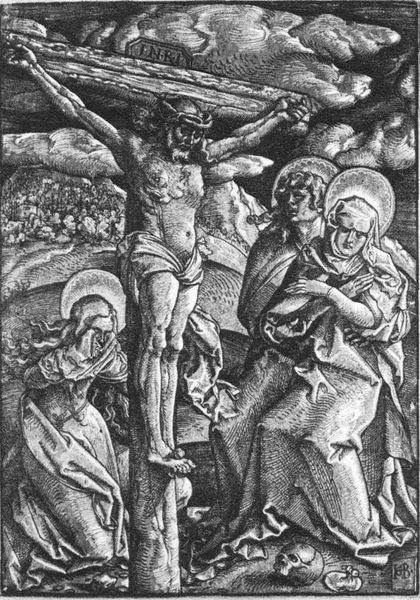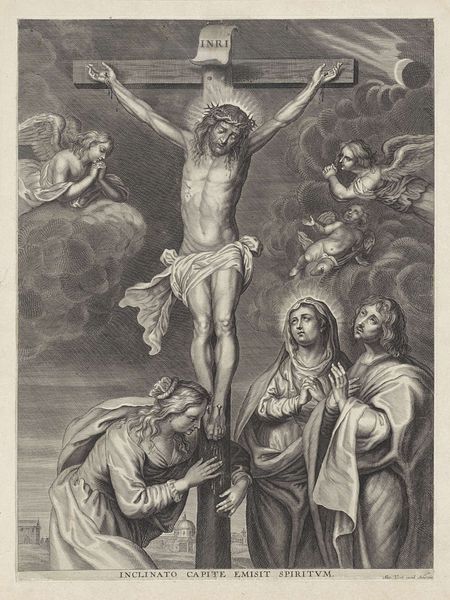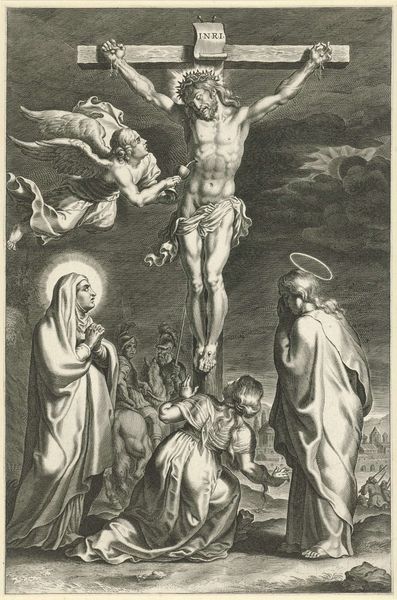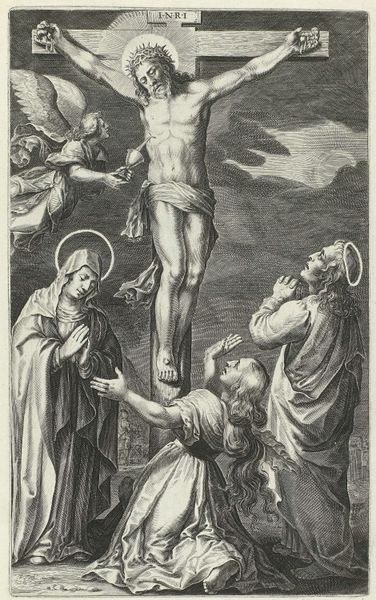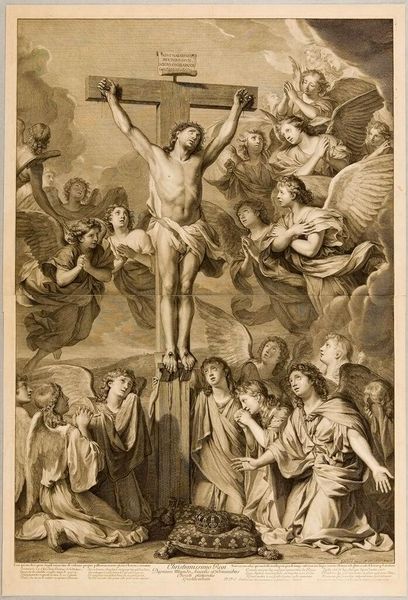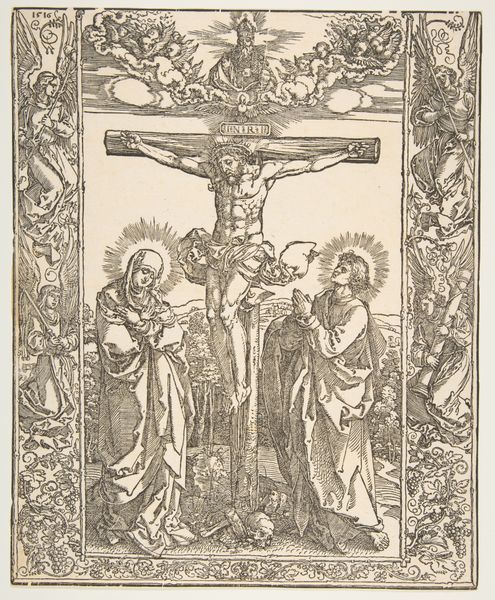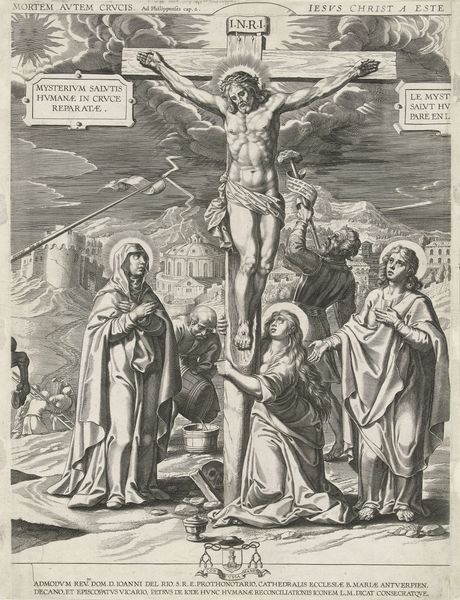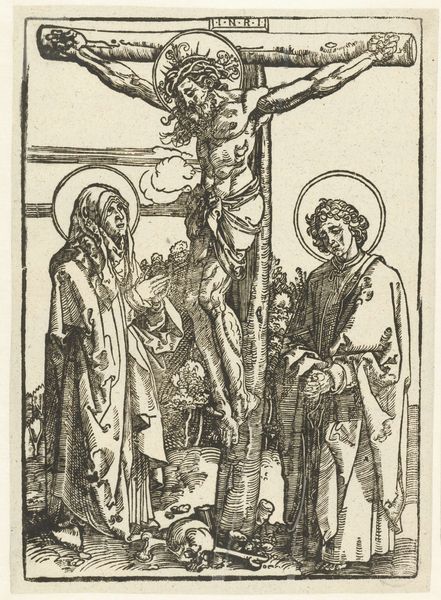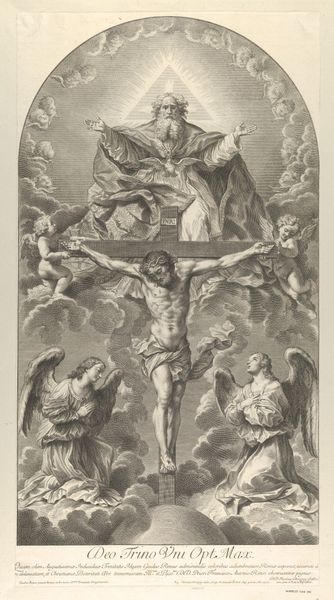
Christ on the Cross flanked by the Virgin and Saint John 1530 - 1540
0:00
0:00
drawing, print, intaglio, engraving
#
portrait
#
drawing
#
narrative-art
# print
#
intaglio
#
figuration
#
crucifixion
#
history-painting
#
northern-renaissance
#
engraving
#
virgin-mary
Dimensions: Sheet: 11 3/4 × 8 1/4 in. (29.8 × 21 cm)
Copyright: Public Domain
Curator: This intaglio print, “Christ on the Cross flanked by the Virgin and Saint John,” from the Dürer School, circa 1530 to 1540, presents a somber scene. The meticulous lines of the engraving immediately establish a strong sense of gravity, wouldn't you agree? Editor: Absolutely. My first impression is one of profound sorrow. The stark contrast in values accentuates the gaunt figure of Christ and the deep despair etched on the faces of Mary and John. It is relentlessly melancholic in tone. Curator: The composition certainly emphasizes this. Consider the arrangement: the central, vertical axis dominated by the Cross bisects the space, while the figures on either side mirror each other in their postures of grief, creating a sense of symmetrical desolation. The surrounding symbols offer meaning to consider, such as the sun and moon. Editor: Placing that type of image in history is key here: Northern Renaissance artists used printmaking to disseminate religious imagery widely, engaging a broader public and reinforcing religious ideology, or sparking theological debate. Curator: A powerful reminder of printmaking's accessibility. Look closely at Christ’s body. The engraver uses very fine lines to define the musculature, conveying the suffering and physical strain. A visceral experience is portrayed with precision. Editor: Yes, and that skull at the foot of the cross—a potent symbol, naturally reminding viewers of mortality. It underscores how the image relates to social attitudes about death. The visual politics of the print, with Christ centrally framed, promote redemption through a deeply ingrained Christian vision of sacrifice. Curator: Indeed, and considering the engraver, though unknown, belonged to Dürer's sphere, you observe this artistic lineage and the way visual ideas moved within a circle of artists and the era they represent. The meticulousness of the lines creates the form, mood, and meaning behind the subject matter. Editor: Ultimately, the work operates both as a devotional image and a statement of socio-cultural faith, where every mark in the work holds significance. Curator: Precisely. Every stroke of the engraving tool speaks to both personal grief and universal salvation, reflecting and reinforcing society's belief at the time. Editor: An elegant conclusion on the confluence of structure, imagery, and history in “Christ on the Cross flanked by the Virgin and Saint John.”
Comments
No comments
Be the first to comment and join the conversation on the ultimate creative platform.
